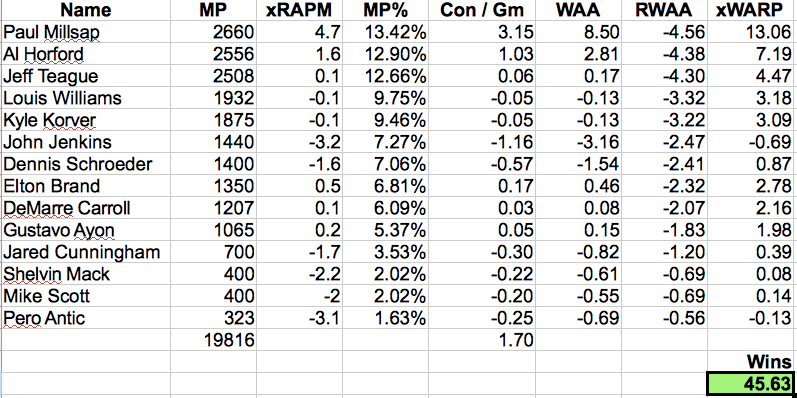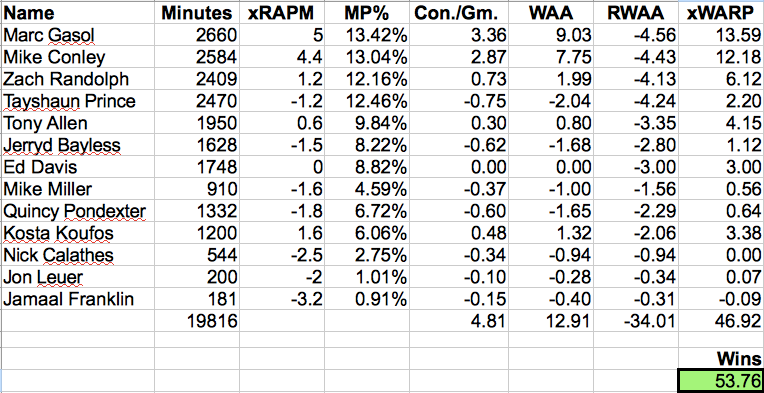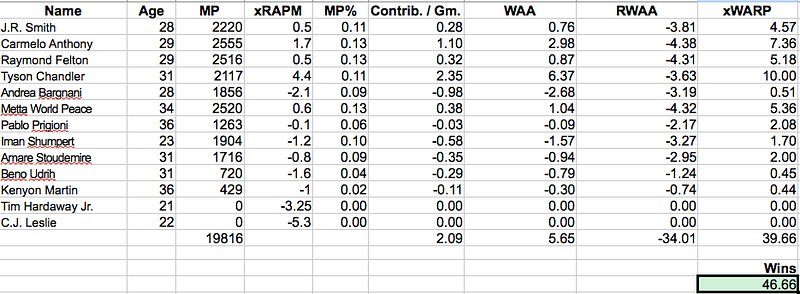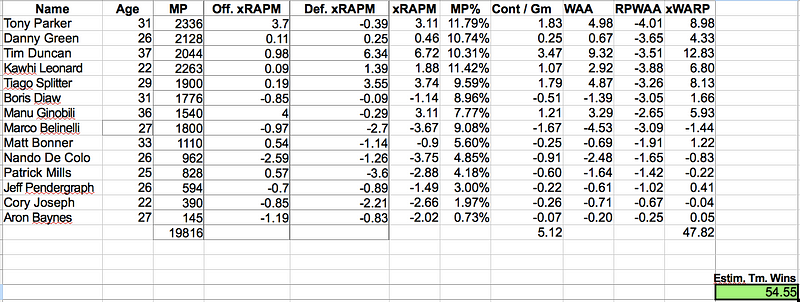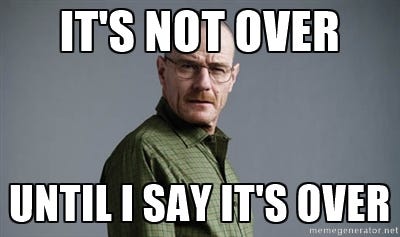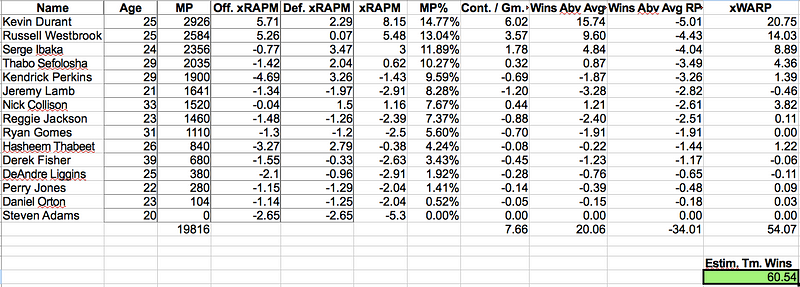After a great, exciting regular season and post-season run the Golden State Warriors’ front office decided not to rest on its laurels. This offseason, they made a big move to dump bloated contracts plus a couple future first round draft picks to the Jazz in order to free up the cap space necessary to sign versatile swingman Andre Iguodala. Will that move be enough to propel the Warriors towards the top of the Western Conference?
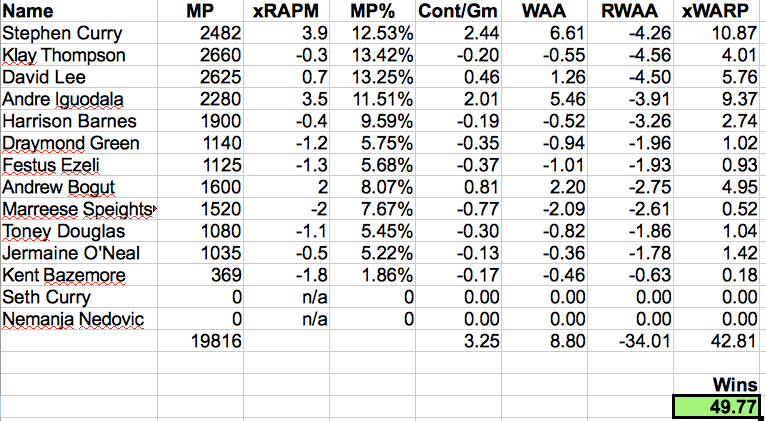
It appears not. The Warriors project to be better than their 47 win record of last year, clocking in at a projected 50 wins here. Three wins of improvement is actually underselling the Warriors projected improvement a bit. Last year, the Warriors had the point differential or margin of victory of a 44 win team. So really a 50 win projection for these Warriors represents a 6 win improvement in quality over the team they were last year. That sounds about right for a team adding a player of Iguodala’s quality, while already being a good team to start.
There are a couple of reasons the Warriors don’t project to shoot up the Western Conference ranks, aside from their overachieving last year relative to their point differential. David Lee and Stephen Curry both project to regress a bit from their numbers last year, according to Nathan Walker’s projected xRAPM numbers. Steph’s projected to clock in at +3.9, compared with a +4.2 last year, whereas Lee is projected to produce just a +.7 compared to his much better +1.4 of last year. This is becoming a bit of a theme for teams that had their best players play very well last year, and it should be. Statistically speaking, it’s more likely than not that a player coming off a career season (or even a very good one relative to their prior performance) will take a small step back towards the mean of their previous career performance than it is that they will produce the same numbers or better.
Additionally, the Warriors lost Jarrett Jack from last year’s squad and have replaced his spot in the rotation with… Toney Douglas? Douglas projects to be an above replacement contributor, to be sure, but he doesn’t project to be as helpful as Jack was. Jack’s xRAPM last year was -.7, whereas Douglas projects to be worse at -1.1. The loss of Jack, expected regression to the mean for the duo of Lee and Curry, added to the fact that this was a club closer to a 44 win team last year than a 47 win team, all conspire to make it seem likely that the Warriors will disappoint the lofty expectations that have arrived with adding Iguodala to a team that already had a nice playoff run last year. On the other hand, 50 wins is certainly nothing to feel shame over and Stephen Curry could always go nova again in the playoffs and lay waste to teams that appear better on paper, so take heart in that Dubs fans.
Image from Keith Allison via Flickr.
